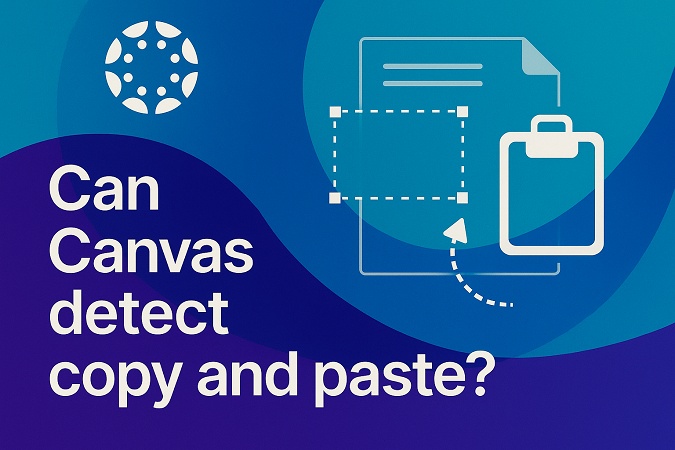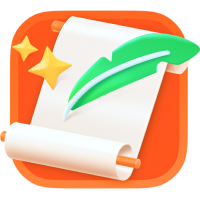Can Canvas Detect Copy and Paste? Everything You Should Know
As online education becomes more common, platforms like Canvas LMS are essential for managing courses, assignments, and exams. But many students wonder: Can Canvas detect copy and paste? In this article, we'll explore how Canvas monitors student activity, what instructors can see during quizzes, and how Canvas works with third-party tools to detect cheating or plagiarism.
How Canvas Monitors Student Activity

Canvas is designed to help educators track and manage student progress. It collects a range of data, including:
-
Login times and durations
-
Page navigation
-
Assignment submissions
-
Quiz attempts and completion times
However, Canvas does not track everything. For example, it does not log every keystroke, mouse click, or whether a student copies and pastes text. While Canvas activity logs are useful for spotting irregularities, they do not capture detailed behavior like copying content from external sources.
Tips:
Worried about your academic work being incorrectly flagged by school AI detectors? Tenorshare AI Bypass helps you avoid misidentification by institutional AI systems. It ensures your writing flows naturally and remains undetectable to aggressive content detection.
Can Canvas Detect Copy and Paste?
The short answer is: No, Canvas cannot directly detect copy and paste actions . The system does not have built-in tools to track clipboard activities such as using Ctrl+C or Ctrl+V.
However, copying and pasting content may still be flagged indirectly. If a student pastes large blocks of text from an online source or another student, instructors may notice style changes or formatting issues. Additionally, plagiarism detection tools integrated with Canvas can catch the copied content even if Canvas itself does not register the act of pasting.
What Can Professors See on Canvas During a Quiz?
Professors using Canvas have access to quiz analytics and activity logs . These tools can show:
-
When the student starts and submits the quiz.
-
Time spent on each question.
-
Patterns of answering, such as rapid changes in answers.
While professors cannot see exact screen activity or detect if a student switches browser tabs without extra software , they may still identify suspicious behavior through unusual answer patterns or timing inconsistencies.
To enhance monitoring, many institutions pair Canvas with proctoring tools that can restrict certain actions or record student screens during exams.
Can Canvas Detect Cheating?
On its own, Canvas is limited in detecting cheating. It cannot monitor a student's environment, detect multiple devices, or record their screen. However, cheating can still be flagged based on:
-
Unusual answer timing
-
Identical submissions among students
-
Suspicious behavior during a test
To combat cheating more effectively, many schools use external proctoring and plagiarism detection tools alongside Canvas.
How Does Canvas Integrate With Third-Party Plagiarism Detection Tools?
Canvas supports integrations with several third-party academic integrity tools . These tools provide stronger enforcement capabilities, including:
-
Turnitin and Unicheck for plagiarism detection.
-
Respondus LockDown Browser , Proctorio , and Honorlock for exam proctoring.
These services can:
-
Prevent copy-paste actions during exams.
-
Scan submitted work for similarity to online content and previous submissions.
-
Use webcams, microphones, and AI to monitor behavior during tests.
These integrations allow instructors to catch copied content more reliably and maintain academic standards in online education.
How to Bypass Canvas Detection with AI Tools
While Canvas and its integrated tools like Turnitin or Respondus can flag suspicious behavior, they aren't perfect---and sometimes even flag original work by mistake. To minimize these risks, students often turn to intelligent writing support tools.
Tenorshare AI Bypass helps make your content sound more natural and human-written, reducing the chance of being flagged by AI or plagiarism detectors. It's a smart solution for anyone concerned about false positives or overly strict academic filters.
Also read: Tenorshare AI Bypass: Comprehensive Review, Features, Pros and Cons

Conclusion
While Canvas cannot directly detect copy and paste , it plays an important role in a broader system designed to uphold academic integrity. With the help of third-party tools, instructors can monitor student activity more effectively, detect plagiarism, and discourage dishonest behavior.
For students concerned about false flags or overly sensitive AI detectors, tools like Tenorshare AI Bypass can help ensure your work is interpreted accurately. It's a smart way to stay protected while maintaining academic integrity.

Tenorshare AI Bypass
- Create 100% undetectable human-like content
- Bypass all AI detector tools like GPTZero, ZeroGPT, Copyleaks, etc.
- Original content, free of plagiarism and grammatical errors
- One-click AI bypass with a clean and easy-to-use interface
FAQs
Does Canvas tell when you copy and paste?
No, Canvas itself does not have the ability to detect copy-and-paste actions directly. It does not track keyboard shortcuts or clipboard activity. However, plagiarism detection tools integrated into Canvas (like Turnitin) can flag copied content from external sources.
Is it true that Canvas can detect cheating?
Canvas alone has limited capability to detect cheating. It can log quiz timings, navigation, and answer changes. However, when paired with tools like Respondus LockDown Browser or Proctorio, it can monitor webcam, screen activity, and restrict actions---making cheating more detectable.
Can Canvas see if you copy and paste to ChatGPT or other AI tools?
No, Canvas cannot see your activities outside its platform. It does not monitor external tools like ChatGPT unless used within a proctored environment where screen or browser monitoring is active. AI-generated text, however, might be flagged by plagiarism or AI detection systems.
Can you copy and paste into Canvas?
Yes, students can copy and paste content into discussion boards, assignment text boxes, and quiz answers within Canvas. However, pasted content may be evaluated by plagiarism detection software, so originality and proper citation are strongly recommended.
How to avoid AI detection on Canvas?
Use original writing, avoid generic AI-generated text, and cite your sources properly. Tools like Tenorshare AI Bypass can help make your content sound more natural and less likely to be flagged.
You Might Also Like
- 5 Best AI Checker of 10,000 Words: Accurate AI Detection Tools
- Is Claude 3 Opus Detectable Truly? Honest Test
- Understanding Turnitin Similarity Score: What You Need to Know
- How to Use Turnitin With or Without Class ID: Students and Teacher Guide
- Does Brightspace Detect AI Content Like ChatGPT?
- Tenorshare AI Humanizer Review: Can It Bypass AI Detectors?
- Is DeepSeek Undetectable by AI Content Detectors?
- Can Teachers Detect AI in PowerPoints Slides: The Complete Guide
- Can Turnitin Detect Snapchat AI? Find Out With Proof!
- Can Canvas Detect Screenshots on Quizzes?
